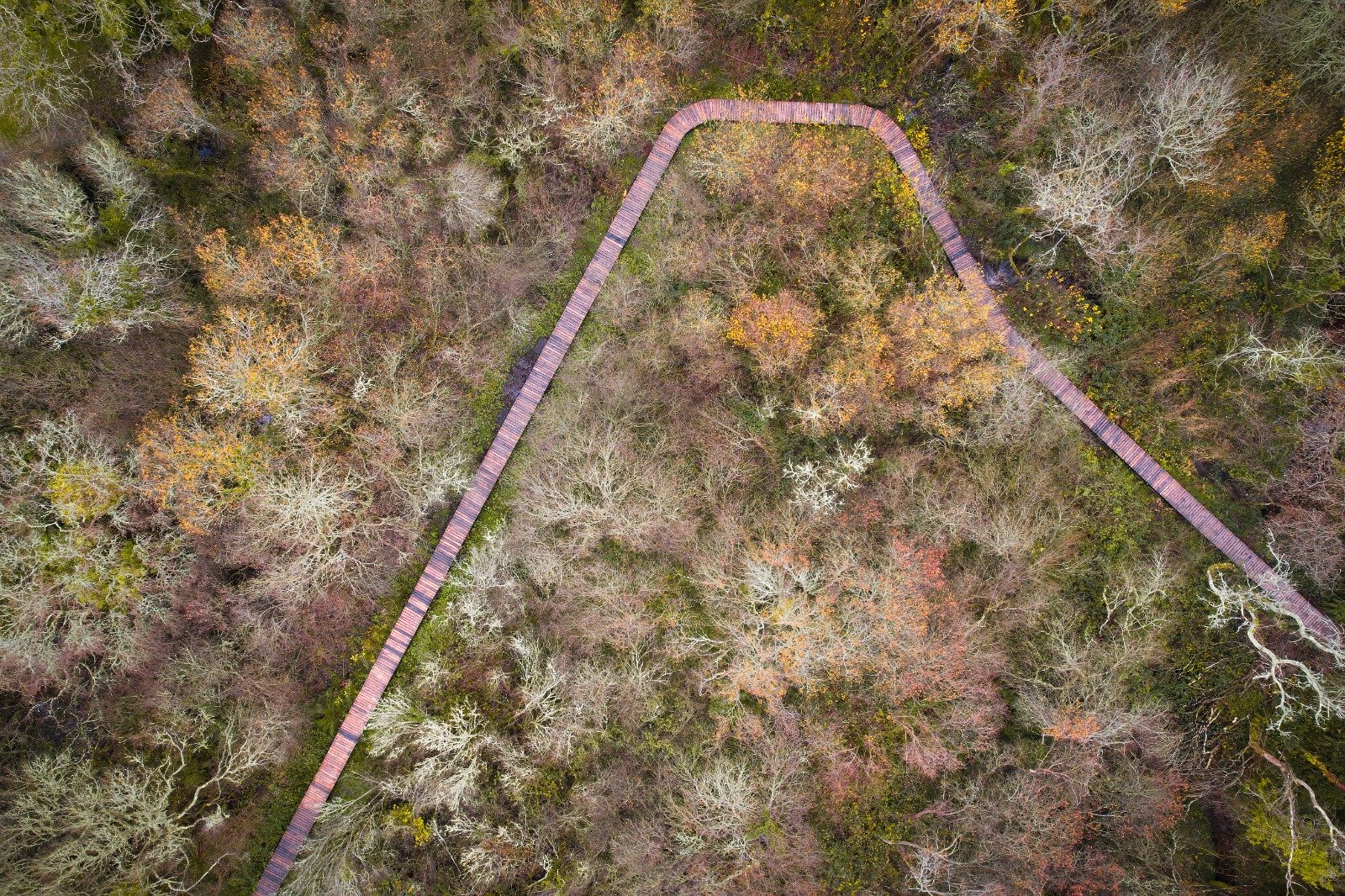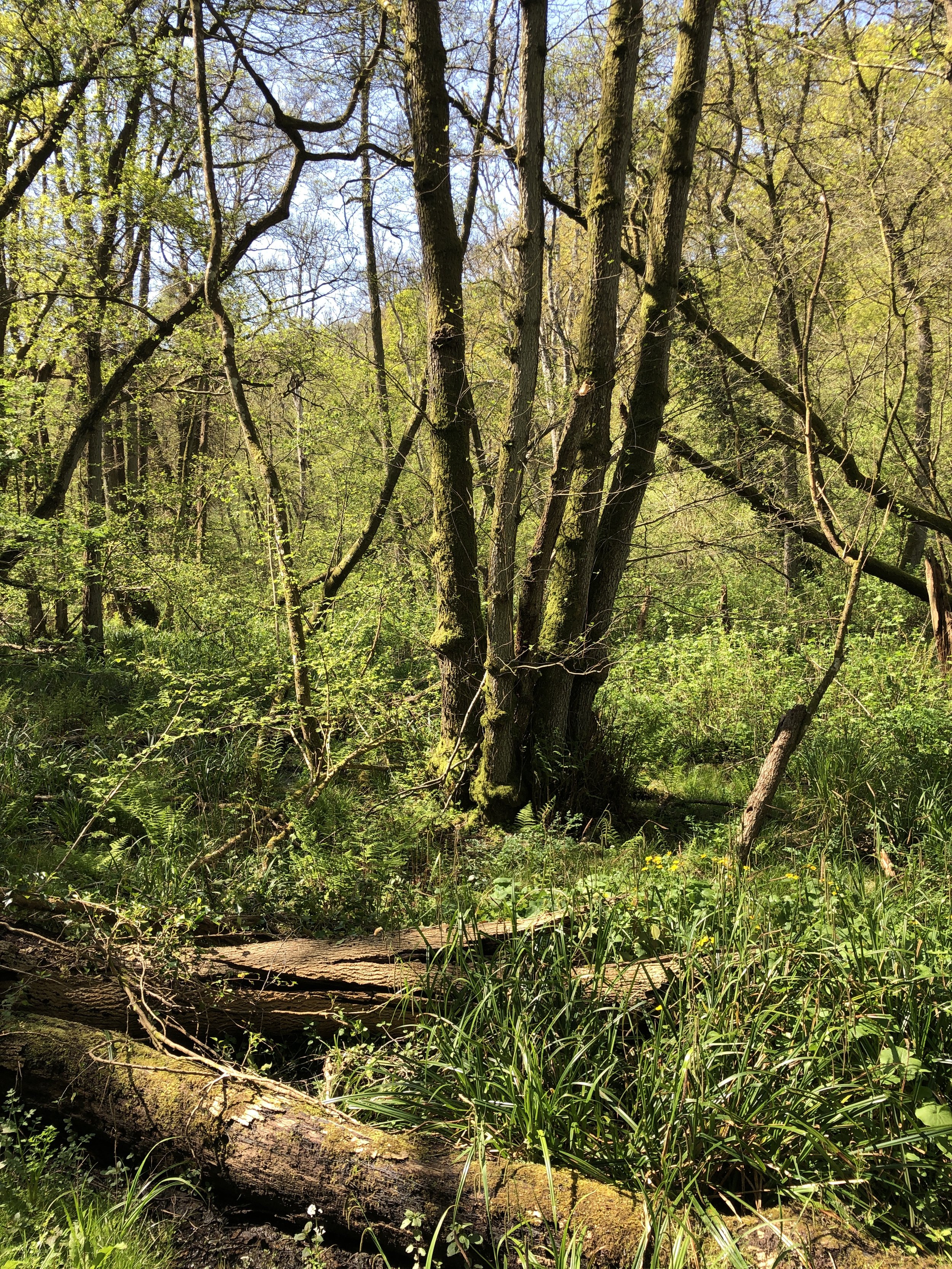
Our projects
Photo: Finley Dennison
Help us map wet woodlands
We’re building a database of wet woodland sites across the country.
We need your help to do this!
Please submit details of wet woodlands you know about using this form.
Or email alice.milner@rhul.ac.uk.
Carbon in wet woodlands
The forgotten forests: improving our understanding of wet woodlands as carbon-dense ecosystems is a research project measuring the amount of carbon in wet woodlands.
Key features: The research measures the amount of carbon aboveground (in the wood of trees) and belowground (in the peat and tree roots) in wet woodland, and links these to woodland characteristics, such as tree age and species. The project will provide the first estimates of carbon stocks in wet woodland.
Why it’s important: To help tackle climate change and to get maximum carbon storage from tree planting, the right type of trees need to be planted in the right places. Policies on tree planting have largely ignored wet woodlands, and very little research has been done on these systems so we don’t know how their re-establishment can help national tree-planting schemes. Understanding more about wet woodlands and their potential for carbon accumulation above- and belowground will help us improve decisions around land-use and afforestation for climate change mitigation.
Wet woodland peat cores can be used to analyse the amount of belowground carbon
Location: Peat-forming wet woodlands in the Broads National Park, Norfolk, UK.
Who’s involved: The research is led by Dr Alice Milner (Royal Holloway University of London), Dr Emily Lines (University of Cambridge) and Prof Andy Baird (University of Leeds); and involves project partners from the Broads Authority, Natural England and the Ted Ellis Trust. The project is funded by the Woodland Trust, with contributions from the Broads Authority and Royal Holloway University of London. Read about it on the Woodland Trust website.
Contact: alice.milner@rhul.ac.uk
Wet woodlands as a nature-based solution to climate change
The wetter the better? Wet woodlands as a nature-based solution to climate change is a research project looking at the potential of wet woodlands for climate change mitigation.
Wet woodland at Slapton Ley, Devon UK
Key features: This project will assess the vulnerability of wet woodland ecosystems (and their carbon storage potential) to future climatic and land-use change including sea-level rise and land management activities. The benefits of preserving these ecosystems are likely to be substantial, given what we know about organic-rich environments. Understanding more about wet woodlands and their potential for carbon accumulation above- and belowground will help us improve decisions around land-use and afforestation for climate change mitigation and their role as a nature-based solution to climate change.
Why it’s important: This project will provide initial data on the climate mitigation potential of these ecosystems. This data can be used to inform potential future payment categories for wet woodland ecosystems under the Woodland Carbon Code and the Peatland Code. Stakeholders and land managers will benefit from this research. For example, an improved understanding of wet woodland functioning will allow for better integration of these ecosystems in land-use planning, providing insight into the importance of their conservation and potential restoration.
Location: Slapton Ley, Devon, UK.
Who’s involved: The research is led by Dr Scott J Davidson (Université du Québec à Montréal, Canada), Dr Paul Lunt (University of Plymouth), in collaboration with Dr Tom Roland (University of Exeter); and Slapton Ley Field Studies Council. The project is funded by the Seale-Hayne Education Trust.
Contact: Scott J. Davidson at davidson.scott_j@uqam.ca.
Monitoring changes in wet woodlands
The Broadland Ecohydrological Observatory (BEO) is a wetland monitoring site collecting long-term data on a floodplain fen wet woodland.
Monitoring water level and water flow in wet woodland
Key features: Monitoring started in 2017 using a series of instruments to collect hourly data on the meteorological (e.g., temperature, rainfall) and hydrological (e.g., water level, salinity) changes. The data are used to understand how this freshwater ecosystem functions, how it changes over time, and responds to flooding from the river and tidal (saline) surges from the coast.
Why it’s important: Sea-level rise caused by climate change is a potential major threat to coastal freshwater peatlands. The ingress of salty water could destroy their existing plant communities and their carbon sink function. There is considerable research in how coastal saltwater ecosystems – such as salt marshes and mangroves – might adjust to sea-level rise but less attention has been given to coastal freshwater wetlands, such as floodplain fens and wet woodlands. Data on long-term changes (over years and decades) will improve our understanding of the threats and potential solutions to these important ecosystems.
Location: Wheatfen, Norfolk UK.
Who’s involved: The BEO was established by Dr Alice Milner (Royal Holloway University of London) and Prof Andy Baird (University of Leeds) in partnership with the Ted Ellis Trust; and collaborates with a range of academic and non-academic institutions.
Contact: alice.milner@rhul.ac.uk
The Wetter the Better? Understanding wet woodland carbon dynamics in the Anthropocene
A PhD project (led by PhD researcher Emma Duley) to understand carbon dynamics in peat-forming wet woodland ecosystems.
Taking greenhouse gas measurements from Goss Moor wet woodland
Key features: This PhD research is focussed on understanding two key questions around wet woodlands: (1) why do some wet woodlands form peat and others do not? and (2) how resilient are the carbon dynamics of wet woodlands to a changing climate? To understand how wet woodlands function in a modern context, carbon dioxide and methane emissions, above- and belowground carbon stocks, and decomposition rates are being measured. The peat – made up of partially decomposed plant material accumulated over hundreds of years – gives us clues about how wet woodlands have developed through time, and how they have changed under different environmental conditions in the past. This PhD research uses a palaeoecological approach to investigate what we can learn from the past around wet woodland development, and how this could inform present and future decisions on their management.
Why it’s important: In the UK, wet woodlands exist in highly fragmented patches which account for <1 % of land cover. Historical evidence shows that wet woodlands were once widespread in the UK but have since been deforested, drained and the land converted to other uses. The outcomes of this project is contributing to informing UK policy and the use of wet woodlands as nature-based solutions for climate change mitigation.
Location: Goss Moor National Nature Reserve and the Eden Project, Cornwall UK.
Who’s involved: The research project is led by PhD researcher Emma Duley, supervised by Dr Scott J. Davidson (Université du Québec à Montréal, Canada) and co-supervised by Dr Alice Milner (RHUL), Dr Tom Roland (University of Exeter) and Dr Marion Bryant (Natural England). The research is funded by the ARIES Doctoral Training Partnership.
Contact: emma.duley@plymouth.ac.uk and davidson.scott_j@uqam.ca
Discovering wet woodland at Wakehurst Kew
Wet woodland at RBG Kew. Large quantities of dead and decaying wood in wet woodlands provide rich niches for species.
The wet woodland at Wakehurst RBG Kew has been integrated into the carbon strand of the Landscape Ecology Programme: Nature Unlocked at Wakehurst. The site acts as a living laboratory to understand greenhouse gas emissions from the wet woodland soils, using continuous gas flux sensors.
Who’s involved: The research is a collaboration between Wakehurst and the Wet Woodland Research Network, linked to Nature Unlocked at Wakehurst, and including PhD research undertaken by Steph Batten.
Contact: alice.milner@rhul.ac.uk




